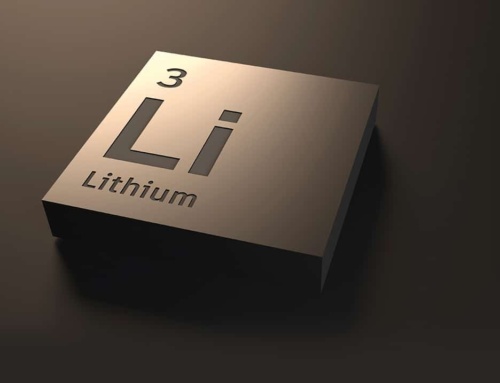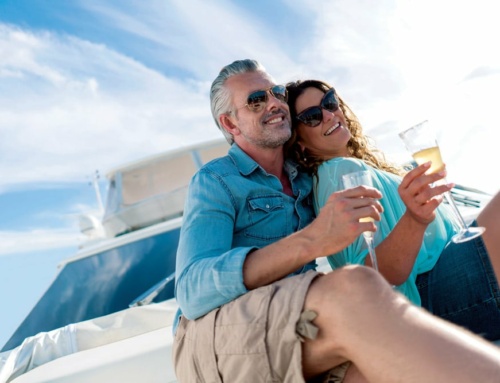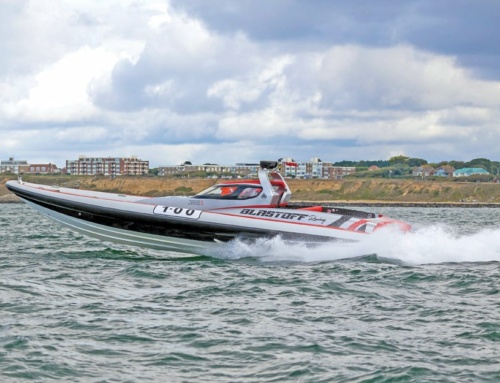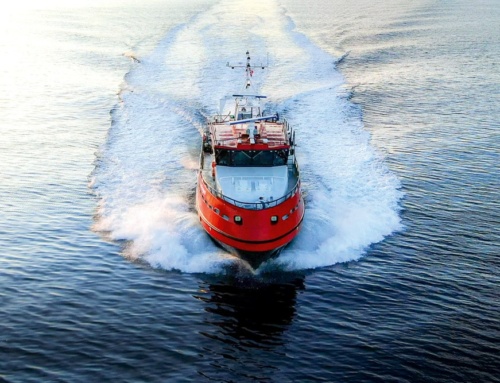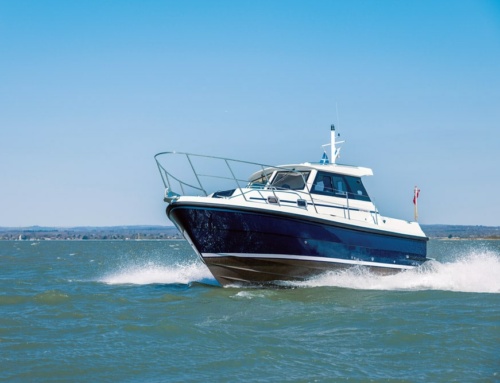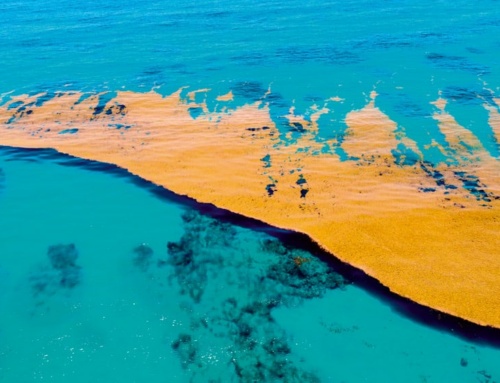- … The appeal of PVC tubes is straightforward; their price advantage is spectacular.
- … PU is the uncontested Arnold Schwarzenegger of the RIB fabric world.
- … For builders of custom and semi-custom RIBs, CSM’s versatility is a big plus.
The Making of RIB Tubes
Dave Marsh examines the pros and cons of the various materials used in the construction of RIB tubes …
Background
When you buy a new RIB, especially a big one, the chances are that you will be able to customise your boat in all sorts of significant ways: almost certainly the engines, probably the seating too, and possibly the helm console and the storage modules. On top-end RIBs, it could be almost anything you fancy. And yet with very few exceptions, you will almost certainly not be able to choose what material your tubes are made of – which is curious when you consider that it’s the tubes that make a RIB what it is.
Of course, the situation changes when you come to retube your boat, either because of irreparable damage, maybe long-term wear and tear, or even conceivably because you’ve just had your Nissan GTR wrapped in pseudo carbon fibre and desperately want your RIB to match (no derisive snorting please – apparently it’s common in superyacht circles). But even if you can’t choose your tube material, it helps to know what the pros and cons are.
The three principal contenders are PU (polyurethane)-coated fabrics, PVC (polyvinylchloride)-covered materials and CSM (chlorosulfonated polyethylene rubber)-coated fabrics. CSM and its best buddies ORCA and Hypalon need a brief historical explanation. Hypalon is a synthetic rubber originally made by DuPont circa 1950s onwards and is used extensively in the manufacturing of RIB tubes. DuPont’s aim with Hypalon was to significantly better the physical properties of natural and butyl rubber. It was discontinued in June 2009, but very similar materials immediately took up the slack, most notably the various ORCA materials made by Pennel & Flipo in France. However, Hypalon had become to the RIB world what Hoover was to vacuum cleaners, so the word has remained in common use. So although the exact chemical properties of the various forms may differ slightly, it doesn’t matter whether you read about CSM or Hypalon or ORCA, they’re essentially all the same type of material.
Another key point is that the three rivals, PU, PVC and CSM, are all outer coatings that form part of a sandwich material. The better PU and CSM materials generally have a polyamide core, whereas PVC usually has a polyester or polyamide fabric core. These core materials are woven fabrics – tightly woven, mind – but not in themselves remotely airtight or watertight. They are there to provide the underlying material strength, and when you specify a heavier fabric to increase its durability, it is invariably the core material that you are augmenting, not the outer skins. For example, Henshaw’s 1500gsm (grams/m2) Hypalon fabric is only 15% heavier than their 1300gsm material, but their polyamide core is 52% heftier. That leaves the three competing coatings free to keep the air in and the water out, and to provide resistance to UV (ultraviolet) degradation, and also to puncture, abrasion, and wear and tear.
PVC – the frugal one
The appeal of PVC-coated RIB tubes is straightforward: they’re the least costly option. And their price advantage is not trifling, it’s spectacular. One of the few builders that does offer alternative tube materials is Zodiac, and the French company’s prices are very revealing. The diddy Zodiac Cadet 250 costs £1,712 with PVC tubes and £2,863 with Hypalon tubes (see www.zodiac-boats.co.uk). Bear in mind that the otherwise identical boats embody all manner of common paraphernalia such as the transom, a seat, the foot pump, oars and rowlocks, handholds, a repair kit and a carry bag, so it’s clear that the underlying cost of manufacture – labour and materials – is far more substantial than the 67% price hike for the Hypalon boat suggests.
So why don’t all RIBs use PVC? First, the assembly of PVC tubes only becomes economically effective when it’s a mechanised mass production process, so it’s not really suitable for the likes of Scorpion and Pascoe. It’s very rigid compared with PU materials and particularly with Hypalon, and unlike Hypalon it does not have a mild ripstop characteristic. According to Kieran, service manager at the RIB Shop on the Hamble (www.rib-shop.com), because of these interlinked characteristics, when PVC does fail, the failure tends to travel along the tube. The same goes for the seams if they fail. PVC is also much harder to repair. Of course, because of its price, retubing in PVC can be a surprisingly inexpensive process.
But just because it’s comparatively rigid, and just because PVC can fail, does not mean that failure is just around the corner if you buy a PVC-tubed RIB – far from it. A material join of any type is normally a potential weak spot, but modern welding systems, typically a combination of hot-air and/or high-frequency and/or ultrasonic welding (the same systems used to weld the toughest PU-coated fabrics), means that nowadays well-made seams can be nigh on as strong as the underlying material, which is in itself quite strong.
Unfortunately, some older PVC fabrics gained a bad reputation because the plasticisers that were used – the additives that give PVC its, albeit limited, flexibility – were of very poor quality. These tended to migrate to the surface of the fabric, turn yellowy brown, and become brittle and susceptible to failure. Most RIB builders are nowadays far more mindful of this issue, and PVC materials have improved a lot. According to RIBstore (www.ribstore.co.uk), some PVC fabric manufacturers now provide 10-year-plus UV guarantees on their marine-grade fabrics.
CSM – the glamorous one
CSM fabrics typically comprise a four-part sandwich: a woven polyamide core, a layer of neoprene each side of the core and the chlorosulfonated polyethylene rubber layer on the outside. One of the key advantages that rubber has over its PU and PVC rivals is better resistance to UV – of particular benefit to those in extremely sunny climates. That UV resistance has a knock-on effect: it allows CSM to be made in a veritable rainbow of external colours, and far lighter shades too, because the pigmentation doesn’t really need to repel UV, the rubber itself does that. Rubber also lends itself very well to imprinting with a variety of textures and patterns, including exotica such as snakeskin and a carbon-fibre effect weave. For example, Pennel & Flipo’s ORCA-engineered fabrics are available in six weights, 30 different colours and four surface finishes, whereas their PU-coated fabrics come in three weights, only five different colours and just two surface finishes. For builders of custom and semi-custom RIBs, CSM’s versatility is a big plus.
Hypalon’s rubbery surface also has excellent resistance to chemicals, although other than diesel and petrol spills, and perhaps Martini and champagne glasses brimming over, non-military RIBs are unlikely to have to fight off any more extreme chemical onslaughts. The material’s other appealing quality is its class-best flexibility. It is apparently the easiest material of the three to form and bend into difficult shapes, and its flexibility also makes for a nice, smooth, wrinkle-free shape, even at lowish pressures. And it’s not just superyacht owners who don’t like the look of a wrinkly RIB.
CSM tubes are also more resistant to extremes of temperature than PVC, although that presupposes that the tube manufacturer has fitted PRVs (pressure relief valves) to cope with what can be huge temperature-driven pressure differences in any tube, especially those of darker colours. It’s worth noting that, despite their inner and outer neoprene lining, CSM RIB tubes tend to lose air pressure faster than those made from the other two materials, although Pennel & Flipo bullishly claim ‘perfect air and watertightness’ for their ORCA fabrics. Hypalon’s resistance to abrasion is the least effective of the three materials, and Pennel & Flipo have tackled this issue by developing a slightly different CSM product called ‘ORCA Pro’, which apparently offers superior abrasion resistance ‘for harsh use and professionals boats’. ORCA Pro omits the intermediate (outer) neoprene layer and instead bonds the CSM rubber directly onto the polyamide textile.
PU – the tough one
Just like the Hypalon that Henshaw inflatables (www.henshaw.co.uk) use, the polyurethane fabrics made by Chiorino (www.chiorinocoatedfabrics.co.uk) in Yorkshire are manufactured using a calendaring process, whereby the separate layers are bonded together by passing them through rollers at high pressure and temperature. Like PVC, PU-coated materials are hot-welded. Of course, the strength of any joint depends to no small degree on the skill of the fabricator, but there’s little doubt that a perfectly welded PU joint is stronger than a perfectly glued CSM joint.
Along with joint strength, one of the key benefits of PU-coated fabrics is their superior durability and all-round toughness in every department. Hard data was hard to come by, and what data we did find varied somewhat. For instance, Chiorino claim that their PU materials have ‘abrasion resistance approximately 10x better than other commonly used coatings’, whereas another website declared a 4x gain. By far the most informative source of comparative test data we found was on the excellent Wing inflatables website (www.wing.com/polyurethane-vs-hypalon.php), which catalogues independent research from the US Naval Surface Warfare (USNSW) centre – not a body we would argue with now the Donald is in charge. Anyway, regardless of the actual quantitative measure of superiority of PU materials (which would in any case depend on the exact fabrics being compared), the numerous physical properties that the USNSW centre tested made it crystal clear that PU is the uncontested Arnold Schwarzenegger of the RIB fabric world.
The USNSW centre also found that air retention in PU fabrics was superior, and although it’s more important to the military than it is to the leisure boat buyer, PU boats can weigh less than otherwise identical CSM-tubed boats. This is largely because CSM tubes are glued (and then normally overglued with a covering strip) whereas PU tubes are simply hot-welded like PVC. All told, PU’s combination of attributes led the USNSW centre to conclude that ‘the expected service life of a Hypalon tube is five years, while the expected service life of a comparable polyurethane tube is seven to eight years’, although bear in mind that this is for hard charging military types, not laid-back leisure users like us. Trying to reach a consensus on the lifespan of Hypalon set against PVC proved difficult, although Coastal Inflatables (www.coastalinflatables.com), who build boats using both materials (specifically ORCA’s CSM and Valmex PVC from Melher Texnologies in Germany), were one of the few with the guts to put a figure on this: a roughly 8- to 10-year life cycle for PVC, and 15 to 20 years for ORCA’s fabrics.
Conclusions
Each of the three materials clearly holds top trumps in one or more areas. In short those are; unmatched toughness and durability for polyurethane coated fabrics, unmatched competitiveness for PVC materials, and a more diverse mix of qualities for Hypalon and CSM and ORCA fabrics. But just because all three materials also loose out to the other two in some area or other, doesn’t mean that any of the three fall short in some calamitous way. If you compensate accordingly, all of them have the potential to keep most of us leisure boat users happy most of the time. If you need a tough boat but want an unusual colour and a fancy texture that only ORCA can provide, pick the weightiest fabric and ask for an extra wide strip to cover the glued joint. If you keep a PVC tubed boat in aggressively sunny conditions, keep it covered when you’re not using it. If you need the very toughest RIB of all, but yearn for the super-smooth wrinkle free look that CSM provides, just make sure you buy an exceptionally well made Polyurethane boat and keep it correctly inflated. As we said at the start, we’re not always able to choose what material our RIB tubes are made of, but we can do a lot to make the most of what we get.

